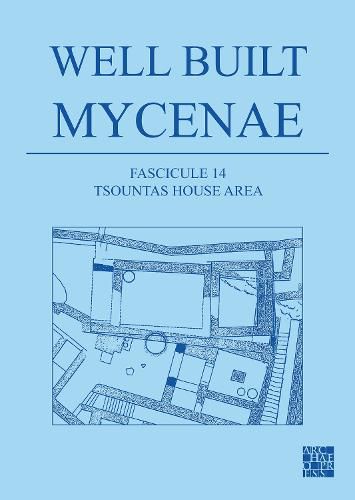Readings Newsletter
Become a Readings Member to make your shopping experience even easier.
Sign in or sign up for free!
You’re not far away from qualifying for FREE standard shipping within Australia
You’ve qualified for FREE standard shipping within Australia
The cart is loading…






Well Built Mycenae, Fascicule 14: Tsountas House Area presents the results of the excavations in this area at Mycenae conducted under the direction of Wace (1950) and Taylour (1959-60) in collaboration with Papademetriou and later Mylonas. Located in the ‘Cult Centre’, the Tsountas House Area contains two buildings and multiple access ramps. It represents both the earliest and latest constructions in this sanctuary complex. First investigated by Tsountas in the late 19th century but never fully published, the remains were fully restudied, and the excavation expanded to discover the first evidence of ritual architecture, features, and paraphernalia. This study is essential for understanding the conception and function of Mycenaean religious space, the associated features and finds, and the socio-political development of cult in the earliest known religious installation at Mycenae. It is also important for a diachronic understanding of the Cult Centre’s development from an individual extra-urban shrine to a sanctuary complex enclosed eventually within a fortified citadel. The contextualised discussion of the unique finds and evidence for ritual and practice directly informs the continuing dialogue about popular and official religions and the role of a palatial administration.
$9.00 standard shipping within Australia
FREE standard shipping within Australia for orders over $100.00
Express & International shipping calculated at checkout
Well Built Mycenae, Fascicule 14: Tsountas House Area presents the results of the excavations in this area at Mycenae conducted under the direction of Wace (1950) and Taylour (1959-60) in collaboration with Papademetriou and later Mylonas. Located in the ‘Cult Centre’, the Tsountas House Area contains two buildings and multiple access ramps. It represents both the earliest and latest constructions in this sanctuary complex. First investigated by Tsountas in the late 19th century but never fully published, the remains were fully restudied, and the excavation expanded to discover the first evidence of ritual architecture, features, and paraphernalia. This study is essential for understanding the conception and function of Mycenaean religious space, the associated features and finds, and the socio-political development of cult in the earliest known religious installation at Mycenae. It is also important for a diachronic understanding of the Cult Centre’s development from an individual extra-urban shrine to a sanctuary complex enclosed eventually within a fortified citadel. The contextualised discussion of the unique finds and evidence for ritual and practice directly informs the continuing dialogue about popular and official religions and the role of a palatial administration.